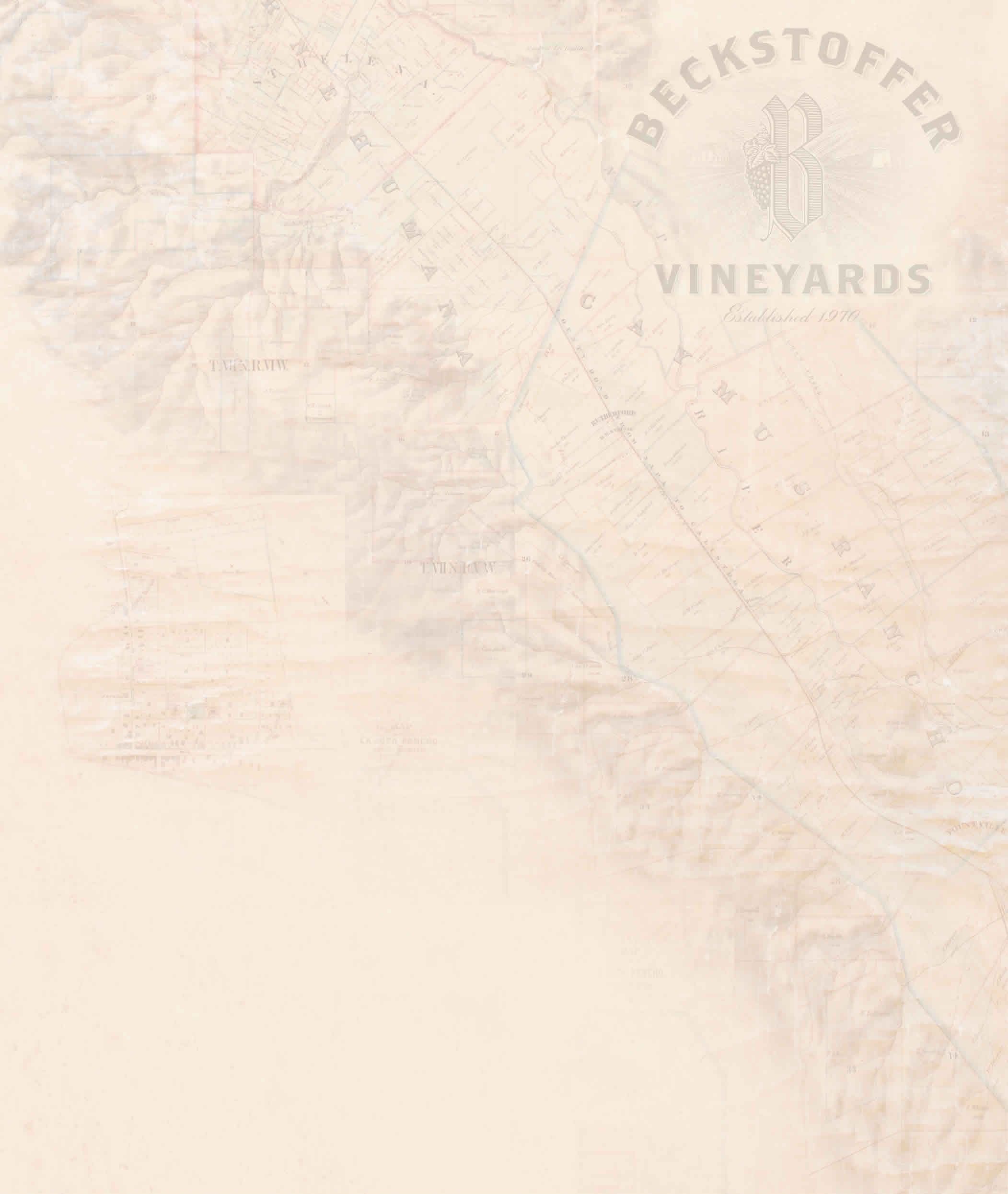INDUSTRY LEADER
Pioneer and advocate in the early 1970s of vineyard drip irrigation, closer vine spacing, leaf thinning and bench grafting. Commonly used today, these early improvements in vineyard management practices have resulted in significant improvements in vine health, productivity and grape quality throughout the industry.
SOIL PREPARATION
Major emphasis is placed on soil preparation prior to planting, ensuring optimal growing conditions for young vines.
CUSTOMIZATION
Customized farming plans are created for each vineyard block to ensure farming and management objectives are aligned with those of our winery clients.
CANOPY MANAGEMENT
Vine canopies are configured to maximize captured sunlight and provide the proper balance between leaves and fruit, resulting in optimization of fruit color and flavor development.
VINE TRELLISING
State-of-the-art trellis and vine training systems like our “Hybrid Cane” and “Hopland Quad” systems are specifically tailored to unique vineyard characteristics.
SELECTIVE MECHANIZATION
Selective use of mechanized equipment and technologies during harvest, leaf removal, and pruning allow labor to focus on critical field operations that require hands-on attention.
NIGHT HARVESTING
Nighttime harvest ensures that the highest quality cool fruit is delivered to our winery clients.
STATE OF THE ART EQUIPMENT
Modern vineyard equipment combines energy efficiency and pinpoint accuracy with ease of use and worker safety.
CUTTING-EDGE VINEYARD TECHNOLOGIES
Software and GPS-based technologies gather and analyze weather, viticulture, and farming data for use in assessing and improving the effectiveness of our farming practices
PEST AND DISEASE MANAGEMENT
Pests and vine diseases are managed sustainably to minimize environmental impacts.
COVER CROPS
Cover crops are planted between vine rows to protect the soil from erosion, regulate vine growth, improve soil fertility and structure and to provide a habitat for beneficial insects.
BIRD AND RODENT CONTROL
Owl boxes provide haven for owls that prey naturally on vineyard pests.
WATER CONSERVATION
Soil probes are used to monitor soil moisture at various depths, enabling the regulation of irrigation timing and water conservation.
WEATHER AND SOIL MONITORING TECHNOLOGY
Remote-monitoring technologies accumulate historic and real-time weather data allowing us to predict harmful fungus or mildew infestations in the vineyard.
BIODIESEL
Our tractor fleet and other diesel powered vehicles are powered by a mix of 50% biodiesel and 50% diesel fuel reducing harmful emissions that are a primary source of greenhouse gases.
SOLAR POWER
We recently completed construction of a 4,600 square foot solar power system generating 48 kilowatts of electricity to support our Rutherford Farm Center’s year-round electricity needs.
RIVERBANK RESTORATION
Restoration and erosion prevention has been accomplished by planting native trees and vegetation along the riverbank at many of our vineyards.
WATER TREATMENT
Rock-lined “tumbling channels” precipitate contaminants naturally before the water enters our irrigation networks.
